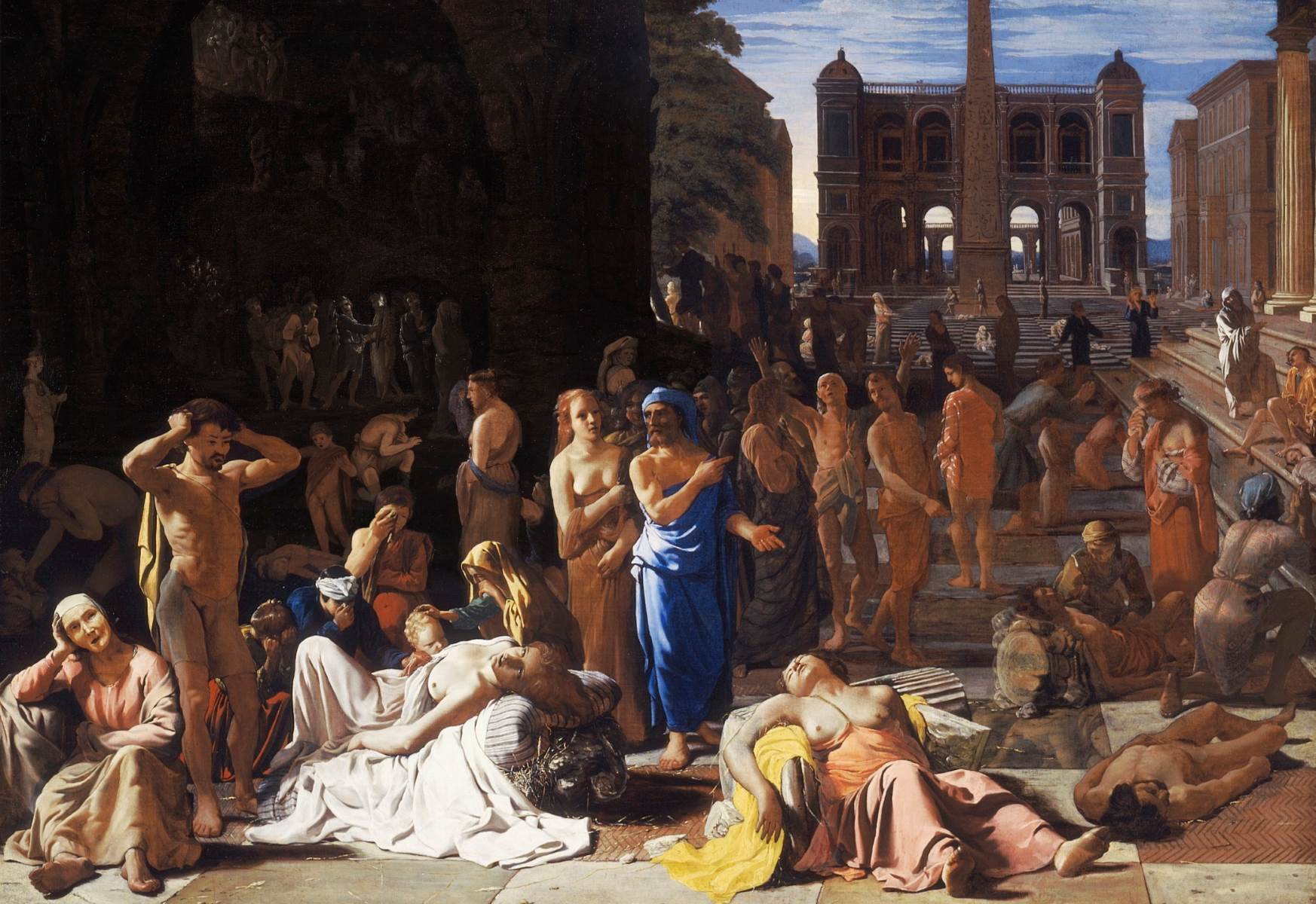
Did you know that the Pilgrims faced devastating plagues before and after their famous voyage on the Mayflower? These early settlers encountered numerous challenges, but the plagues were among the most severe. Plagues played a significant role in shaping the Pilgrims' journey and their interactions with Native Americans. From mysterious illnesses that wiped out entire villages to the harsh conditions aboard the Mayflower, the Pilgrims' story is intertwined with disease and survival. Understanding these plagues provides a deeper insight into the hardships and resilience of these early settlers. Let's dive into 35 intriguing facts about the Pilgrim plagues that changed history.
Key Takeaways:
- The arrival of Pilgrims in 1620 brought devastating plagues that wiped out Native American populations and shaped the future of American history, highlighting the importance of vaccination and cultural sensitivity in managing outbreaks.
- The Pilgrim plagues serve as a reminder of the impact of disease on early American history, emphasizing the need for good sanitation, medical knowledge, and community support in times of crisis.
The Arrival of Pilgrims and Their Impact
When the Pilgrims arrived in America in 1620, they encountered a world vastly different from their own. This new land was not only unfamiliar but also fraught with unseen dangers, including devastating plagues.
-
The Pilgrims landed in America in 1620. Their arrival marked the beginning of a new chapter in American history, but it also brought unforeseen consequences.
-
Native American populations had already been decimated by diseases. Before the Pilgrims arrived, European explorers had introduced diseases like smallpox, which had wiped out large portions of Native American communities.
-
The Pilgrims themselves faced numerous health challenges. The harsh winter and lack of proper nutrition led to many Pilgrims falling ill and dying during their first year.
The Spread of Diseases
The spread of diseases among the Pilgrims and Native Americans was rapid and deadly. These plagues had far-reaching effects on both populations.
-
Smallpox was one of the deadliest diseases. It caused high fever, severe pain, and often death, leaving survivors with permanent scars.
-
Measles also took a heavy toll. This highly contagious virus spread quickly, causing fever, cough, and a characteristic rash.
-
Influenza was another common illness. The flu caused widespread illness and death, particularly during the winter months.
-
Typhus, spread by lice, was rampant. This disease caused fever, headache, and a rash, often leading to severe complications.
-
Dysentery was a major problem. Poor sanitation and contaminated water led to outbreaks of this severe intestinal infection.
The Impact on Native American Communities
Native American communities were particularly hard hit by these diseases, which had devastating effects on their populations and cultures.
-
Entire villages were wiped out by disease. Some Native American communities lost up to 90% of their population due to European-introduced diseases.
-
Traditional ways of life were disrupted. With so many people sick or dead, it became difficult to maintain traditional practices and social structures.
-
Survivors faced long-term health issues. Those who survived diseases like smallpox often dealt with lifelong health problems and disabilities.
The Pilgrims' Struggle for Survival
The Pilgrims faced numerous challenges in their struggle to survive in the New World, including dealing with the constant threat of disease.
-
The first winter was particularly harsh. Many Pilgrims died from cold, hunger, and disease during their first winter in America.
-
Malnutrition weakened their immune systems. A lack of proper nutrition made the Pilgrims more susceptible to illness.
-
Living conditions were poor. Crowded and unsanitary living conditions contributed to the spread of disease.
-
Medical knowledge was limited. The Pilgrims had little understanding of how to treat or prevent diseases, relying on rudimentary and often ineffective remedies.
The Role of Native American Assistance
Despite the devastating impact of diseases, Native Americans played a crucial role in helping the Pilgrims survive.
-
Squanto, a Native American, assisted the Pilgrims. Squanto taught the Pilgrims vital survival skills, including how to grow corn and fish.
-
The Wampanoag tribe formed an alliance with the Pilgrims. This alliance provided the Pilgrims with much-needed support and resources.
-
Native American knowledge of medicinal plants was invaluable. Native Americans shared their knowledge of local plants and herbs, which helped treat some illnesses.
Long-Term Effects of Pilgrim Plagues
The long-term effects of the plagues brought by the Pilgrims were profound and far-reaching, shaping the future of both Native American and European communities in America.
-
Population decline led to power shifts. The massive decline in Native American populations led to significant shifts in power dynamics and land control.
-
Cultural exchange was both positive and negative. While there was some beneficial cultural exchange, the introduction of European diseases had overwhelmingly negative effects.
-
The Pilgrims' survival influenced future settlements. The experiences of the Pilgrims informed future European settlements, leading to changes in how new colonies were established and managed.
-
Disease outbreaks continued for centuries. The introduction of European diseases continued to cause outbreaks and deaths among Native American populations for many years.
-
Historical records highlight the impact of disease. Diaries, letters, and other historical records from the time provide insight into the devastating impact of disease on both Pilgrims and Native Americans.
Modern Understanding of Pilgrim Plagues
Today, we have a much better understanding of the diseases that plagued the Pilgrims and Native Americans, thanks to advances in medical science and historical research.
-
Modern medicine has identified many of the diseases. Advances in medical science have allowed us to identify the specific diseases that affected the Pilgrims and Native Americans.
-
Historical research provides context. Researchers have studied historical records to better understand the impact of these diseases on early American history.
-
Vaccines have eradicated some diseases. Diseases like smallpox have been eradicated thanks to vaccines, preventing future outbreaks.
-
Public health measures have improved. Improved sanitation, nutrition, and medical care have reduced the spread of many diseases that once plagued early settlers.
Lessons Learned from Pilgrim Plagues
The experiences of the Pilgrims and Native Americans with disease offer important lessons for us today, particularly in how we respond to and manage outbreaks.
-
The importance of vaccination. The eradication of diseases like smallpox highlights the crucial role of vaccines in preventing outbreaks.
-
The need for good sanitation. Poor sanitation contributed to the spread of disease among the Pilgrims, underscoring the importance of clean water and proper waste disposal.
-
The value of medical knowledge. Limited medical knowledge hindered the Pilgrims' ability to treat and prevent disease, emphasizing the importance of medical research and education.
-
The impact of nutrition on health. Malnutrition weakened the Pilgrims' immune systems, demonstrating the importance of a balanced diet for maintaining health.
-
The role of community support. The assistance of Native Americans was crucial to the Pilgrims' survival, highlighting the importance of community support during times of crisis.
-
The need for cultural sensitivity. The devastating impact of European diseases on Native Americans underscores the importance of cultural sensitivity and respect in interactions between different communities.
-
The significance of historical records. Diaries, letters, and other historical documents provide valuable insights into the experiences of the Pilgrims and Native Americans, helping us understand the past and learn from it.
-
The ongoing relevance of these lessons. The experiences of the Pilgrims and Native Americans with disease continue to offer valuable lessons for us today, particularly in how we respond to and manage outbreaks.
Final Thoughts on Pilgrim Plagues
Pilgrim plagues played a significant role in shaping early American history. These diseases, brought by European settlers, devastated Native American populations, leading to massive social and cultural upheaval. Smallpox, measles, and influenza were among the deadliest, wiping out entire communities. The lack of immunity among Native Americans made them particularly vulnerable.
Understanding this dark chapter helps us appreciate the resilience of those who survived and adapted. It also underscores the importance of disease prevention and public health measures. Learning from the past can guide us in handling future pandemics more effectively.
So, next time you think about the Pilgrims, remember the plagues that came with them. These facts remind us of the complex and often painful history that shaped the world we live in today. Stay curious, stay informed, and never stop learning about the past.
Frequently Asked Questions
Was this page helpful?
Our commitment to delivering trustworthy and engaging content is at the heart of what we do. Each fact on our site is contributed by real users like you, bringing a wealth of diverse insights and information. To ensure the highest standards of accuracy and reliability, our dedicated editors meticulously review each submission. This process guarantees that the facts we share are not only fascinating but also credible. Trust in our commitment to quality and authenticity as you explore and learn with us.


